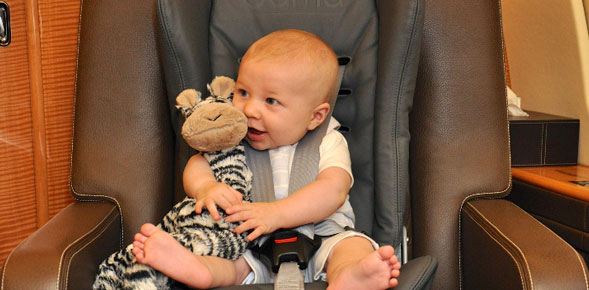Parents will always consider their offsprings’ well being before anything else. Almost any parent will never think about money or effort when it comes to the safety and happiness of their children. Especially when traveling. Whenever you’re traveling by plane, you as a parent should know that an authorized child restraint system (CRS) is the one and only method that will keep your child safe in case of an emergency or turbulence.
Your arms won’t be able to properly protect and hold your toddler in case of a sudden unforeseen crisis. The Federal Aviation Administration (FAA) considers that by securing your child in a CSR during your flight, you’ll do the only RIGHT and SMART THING so that everyone in your family arrives safely at your destination.
What exactly is a Child Restraint System (CRS) ?
A CRS is a SAFETY SEAT which is endorsed by the governmental agency so that it may be used in motor vehicles and aircraft alike. The FAA warns that they check the approval procedures of only a part of the CRSs and that not all the vehicle seats can also be used in planes. You may find more information in this respect on the National Highway Traffic Safety Administration website. Your child’s weight should also be taken into account when selecting the right CRS. The FAA published the following table to help parent decide which seat is best suited for the kid.
If your child weighs… Use a… Less than 20 pounds Rear-facing CRS 20 to 40 pounds Forward-facing CRS 22 to 44 pounds CARES child safety device More than 40 pounds Airplane seat belt
As noticed from the table reproduced above, children weighing between 22 and 44 pounds should be protected by means of a CARES. This Child Safety Device is the only type of harness that is approved by FAA and should only be used aboard a plane, never in motor vehicles.
CARES is formed by a supplementary belt and a shoulder harness which is placed around the seat back and is affixed to the passenger’s lap belt so that the upper part of the body is more restraint. FAA also warns that all CARES child safety devices ought to have the following notes printed on them: “FAA Approved in Accordance with 14 CFR 21.8(d), Approved for Aircraft Use Only” or “FAA Approved in Accordance with 14 CFR 21.305(d), Amd 21.50 6-9-1980, Approved for Aircraft Use Only”.
Things to consider before you depart
- Make sure your CRS is approved by FAA.
- Make sure you book adjoining seat and have your CRS device placed in a window seat – you won’t be allowed to block the escape path in an emergency, not to mention the exit row. FAA published a video on its website demostrating how to install a child-restraint system on a plane.
- Make sure your device is not wider than 16 inches so that is may fit in the pane seats.Make sure your read the FAA’s “Childproof your flight” brochure before you depart. And finally,…….
- Make sure you did not forget you kid’s favorite toy or anything else that will keep his time and thoughts occupied all through the journey.
FAA News Releases
FAA Media Kit
- Tips Sheet (PDF)
- E-News (PDF)

 En
En Es
Es Fr
Fr











